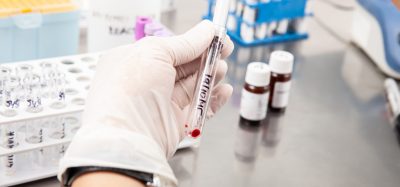What if drug discovery took months, not decades?
Posted: 19 August 2025 | Dr. Carrie Haslam (Editor - Drug Target Review) | No comments yet
Drug discovery is slow, costly and often unsuccessful. DTR hears how GATC Health is applying AI and multiomics to make the process faster, more precise and less reliant on trial and error.


Drug discovery has long been hindered by slow timelines, steep costs and a high failure rate. GATC Health aims to change that by applying artificial intelligence (AI) and multiomics to accelerate the development of safer, more effective therapeutics with greater precision than traditional methods.
This mission attracted Dr Rahul Gupta, former White House Director of National Drug Control Policy, who joined the company as President in early 2025. He brings a public health perspective, with a focus on applying technology and data to improve the efficiency and effectiveness of drug development.
“I assumed this role as President of the company because of the tremendous opportunity to be part of work that is truly cutting edge – at the intersection of health, technology and innovation,” says Gupta. “It was intriguing to me to see what I describe as, literally, science fiction coming to real life.”
Automation now plays a central role in discovery. From self-driving laboratories to real-time bioprocessing
This report explores how data-driven systems improve reproducibility, speed decisions and make scale achievable across research and development.
Inside the report:
- Advance discovery through miniaturised, high-throughput and animal-free systems
- Integrate AI, robotics and analytics to speed decision-making
- Streamline cell therapy and bioprocess QC for scale and compliance
- And more!
This report unlocks perspectives that show how automation is changing the scale and quality of discovery. The result is faster insight, stronger data and better science – access your free copy today
Working alongside him is Ian Jenkins, Chief Science Officer and Co-founder, whose background in genetics and predictive epigenetics has been instrumental in shaping the company’s scientific direction. Together, they are leading the development of a platform aimed at making drug discovery faster, more accurate and more efficient.
The pressure is on to modernise drug discovery – and fast
AI and multiomics are increasingly being used to address some of drug discovery’s most persistent problems – including high failure rates, long timelines and the limited reliability of animal models. By enabling more accurate simulations of human biology, these technologies help identify promising drug targets far earlier in the process.
The whole goal here is to identify and validate therapeutic targets, design novel compounds in silico and predict safety, efficacy and off-target effects with high levels of accuracy.
GATC Health’s proprietary MAT (Multiomics Advanced Technology®) platform is one example. It uses AI to simulate human biology and disease across multiple layers – including genomics, proteomics, transcriptomics, metabolomics and epigenetics. This allows it to identify drug targets and design compounds with high precision.
Gupta explains, “the whole goal here is to identify and validate therapeutic targets, design novel compounds in silico and predict safety, efficacy and off-target effects with high levels of accuracy.”
The result is a significant acceleration of drug development, cutting timelines from decades to months, reducing costs and potentially saving lives.
Jenkins adds, “I like to think of our mission very simply, and that is to improve the health span of mankind using artificial intelligence. You create better medicines and reduced financing risk to get those medicines to the people.”
Rescuing forgotten drugs
Their platform is used to discover new compounds, repurpose existing drugs for new therapeutic uses, and reassess shelved drugs – a significant benefit since traditional development methods are often too slow or costly to revisit these earlier candidates.
It allows us to not only repurpose or rescue failed drugs – shelf drugs – but also to innovate drugs in very fast and inexpensive ways.
“Those are the ones that get lost because there may not be a business model around them,” says Gupta. “So it allows us to not only repurpose or rescue failed drugs – shelf drugs – but also to innovate drugs in very fast and inexpensive ways.”
Jenkins expanded on this, expounding the platform’s capacity to identify and validate treatment approaches for extremely small patient populations. In some cases, he said, a sample size as small as six individuals can constitute a viable treatment programme. This is due to the platform’s ability to simulate drug–body interactions with a high degree of predictive accuracy, allowing efficacy and safety to be assessed computationally before any human or animal testing is required.
This approach is drawing investor interest, backed by a default insurance model that reimburses trial costs in the event of failure. The policy premium is the only financial risk.
We’re attracting a new level of investment and influence in rare and ultra-rare uses. It allows us to serve humanity.
“So we can take bets on things we traditionally wouldn’t have bet on,” Jenkins notes. “We’re attracting a new level of investment and influence in rare and ultra-rare uses. It allows us to serve humanity.”
GATC’s approach to drug discovery is distinct from other AI-led platforms because it is deeply systems-based. Rather than looking at one molecule or one organ, the MAT platform models the human body holistically.
Dr Gupta explains: “It’s like having a systems-level understanding of the human body, but also of biochemical system simulation. It uses human data, as opposed to what a lot of others rely on – animal data.”
It’s like having a systems-level understanding of the human body, but also of biochemical system simulation. It uses human data, as opposed to what a lot of others rely on – animal data.
With simulations that have achieved close to 90 percent predictive accuracy, the system is delivering far greater confidence before any human trial even begins.
“Unlike our competitors, we’ve focused on being the enabling factor for a fundamental shift in health economics,” Jenkins says. “Whether it’s your drug or one we predicted, we know what it’s going to do in the body.”
Animal-free and ethically advanced
The platform’s predictive power also supports a shift away from animal testing, which remains a widely used but increasingly contested part of drug development. For decades, animal models have played a central role in assessing the safety and efficacy of new compounds before they reach human trials. They are deeply embedded in regulatory frameworks and many researchers view them as a necessary step to minimise risk.
However, the approach is far from universally accepted. Critics argue that animal models often fail to accurately reflect how diseases progress in humans or how drugs behave in the human body. Differences in physiology, metabolism and immune response mean that promising results in animals frequently do not translate to success in clinical trials. Some studies have shown that the majority of drugs that pass preclinical testing in animals go on to fail in humans, raising concerns about both scientific validity and wasted resources.
In the drug discovery process, especially in preclinical or studies, we have used animals – tens of millions each year, and that number has only grown.
The platform’s predictive power enables the reduction of animal testing in drug development. “In the drug discovery process, especially in preclinical or studies, we have used animals – tens of millions each year, and that number has only grown,” says Gupta. “And it just turns out, after so many decades, that animals are not good stand-ins for human biology.”
Jenkins agrees: “The reality is, we’ve used animals for so long because there just wasn’t a better way. But the issue is, animals or other species are very different from us in many ways.”
He notes the shift already happening within regulatory bodies like the US Food and Drug Administration (FDA), especially for monoclonal antibodies, where animal data is increasingly seen as inadequate.
Smarter targets, safer drugs
By simulating the whole body, GATC can spot not only therapeutic potential but also off-target effects early; something legacy methods often miss.
We’re finding that a lot of these other drugs have interactions that were either beneficial or potentially harmful.
“We’re finding that a lot of these other drugs have interactions that were either beneficial or potentially harmful,” says Jenkins. “Because of our more accurate simulations, we can both repurpose existing drugs and identify new targets by being aware of the entire systems biology.”
Rather than chasing a single known target, the system lets the AI surface the best solution based on real, holistic data. “It’s an unbiased way to identify novel, or repurpose, targets,” Ian explains.
From local GPs to global strategy
The MAT platform’s scalability could support broader public health efforts; an area that reflects Gupta’s experience in government and health policy.
“If you look at the last five presidents of the United States, they’ve talked about lowering drug costs,” he says. “The first step is to change the drug discovery tools and processes to make drugs more affordable, safer and faster.”
He sees potential in tackling conditions like opioid use disorder, diabetes and Parkinson’s disease, but also in creating infrastructure for rare and neglected diseases, especially in underserved populations.
“Because the GATC Health platform is scalable and cloud-based, it could be deployed to low-resource regions; even through trained community-based agents using an AI system to support treatment,” he says.
Partnerships, policy and proof
The company is active on several fronts, including a recent collaboration focused on opioid use disorder and pancreatic cancer. It is also working with regulators on the role of AI in drug development.
“As you know, there is not a lot of regulatory framework around AI at the federal level, although work is underway,” says Gupta. “We want to continue to partner and offer that kind of background understanding as an industry partner.”
Jenkins adds: “We are in discussions with many like-minded companies to move the needle and drive change in these processes. The world is going to see a fundamental shift in the way medicine is done.”
Although GATC’s platform is disruptive, its goal is not to replace pharma, biotech or academia, but to partner with them.
“I think we’re going to see a growing understanding of how each part supports the other,” says Gupta. “While this work is disruptive in many ways, it is also accelerative in its intent.”
Ultimately, the company is proposing a different approach to drug development – one that uses computational modelling and multiomic data to predict how compounds will behave in the human body before entering clinical trials. This method aims to address common causes of failure in traditional pipelines, such as poor translatability from animal models and late-stage safety issues. It reflects a broader movement in the field towards data-driven decision-making earlier in the discovery process.
Meet the experts


Dr Rahul Gupta is President of GATC Health, an AI-driven biotech company pioneering multiomics-based drug discovery and precision medicine. From 2021 to 2025, he served as the first Senate-confirmed physician to lead the White House Office of National Drug Control Policy, advising the President while directing a $44 billion national drug strategy across 19 federal agencies. An experienced public health leader and strategist, Dr Gupta has advanced novel regulatory frameworks with the FDA and led initiatives at the March of Dimes and as West Virginia’s State Health Commissioner to address critical public health challenges. He continues to drive ethical innovation at the intersection of medicine, technology, and policy to accelerate breakthroughs that improve health outcomes.


Ian Jenkins has served as Chief Science Officer since July 2020. He was previously President, Chief Executive Officer, Chief Financial Officer, and Director of Frélii, Inc. from April 2017 to 31 December 2020. Mr Jenkins has over ten years’ experience as a senior executive. Prior to Frélii, he served as CEO of CodeTech, a Phoenix-based medtech company whose technology was acquired by Hospital Corporation of America. He has also held key marketing and product development roles at Systemic Formulas, Inc. and Orn Industries.
With a background in physiology, technology start-ups, and supplement product research and development, Mr Jenkins brings extensive expertise in engineering, producing, and marketing health technology and nutritional supplements. He holds an MBA from the Thunderbird School of Global Management and a BSc in Physiology from Utah State University.
Related topics
Artificial Intelligence, Big Data, Bioinformatics, Drug Discovery Processes, Drug Repurposing, Drug Targets, Machine learning, Precision Medicine
Related conditions
Diabetes, Opioid use disorder, Pancreatic cancer, Parkinson's disease
Related organisations
GATC Health








